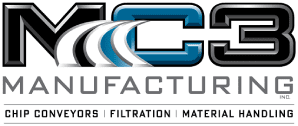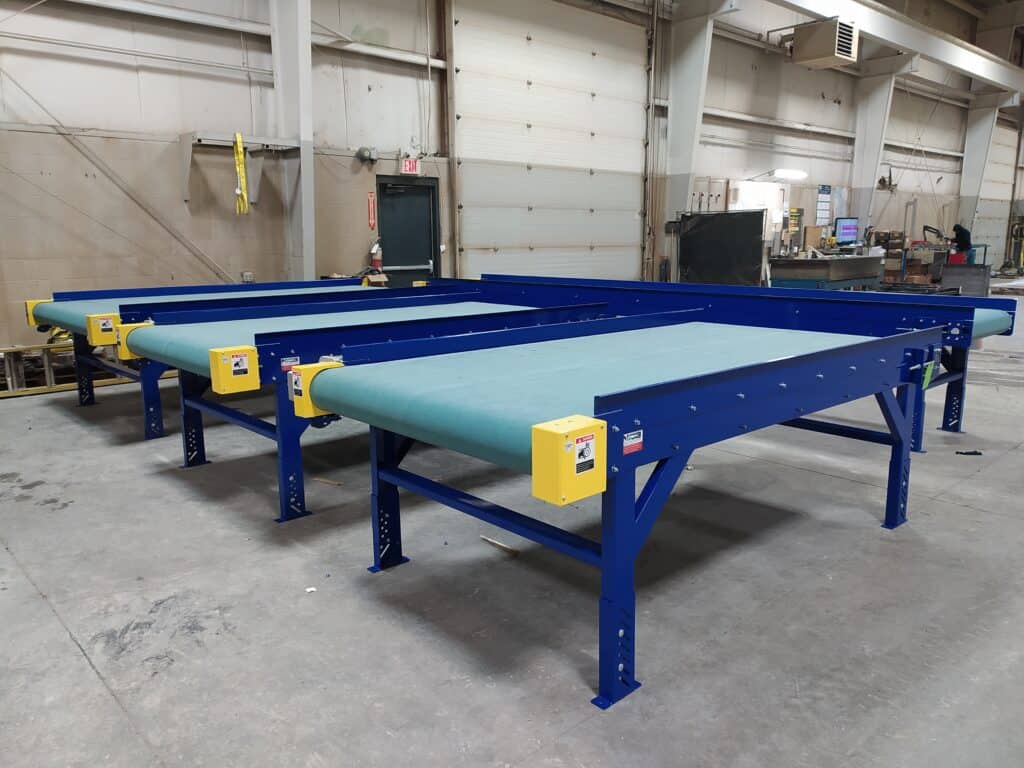Material-handling conveyors play a vital role in industrial processes by facilitating the movement of parts, materials, and products between operations. The specific characteristics of the parts and processes involved will dictate the appropriate conveyor systems for your application, influencing their design and functionality.
Understanding Your Material Handling Needs
The type and design of a conveyor system can significantly affect your productivity, so choosing a system that matches your materials, products, and workflow is critical. Some factors to consider while making this decision include:
- What are you conveying?: The type of products, their shapes, weight, dimensions, materials, and other characteristics greatly influence which conveyor designs and materials will meet your needs.
- Do your conveyors or products require special handling?: Special handling requirements for conveyor systems may include environmental factors (temperature, moisture control), high heat resistance, chemical resistance, impact load capacity, cleanliness standards, and other application-specific requirements.
- How will parts move through the system?: Are inclines or declines needed? Do products need to be oriented in a particular way or will orientation change as they move through the system? Is an accumulating or non-accumulating system a better fit?
- How quickly do products need to be conveyed?: Product characteristics and the speed at which they need to move from point to point affect everything from belt type to motor power, inclines, curves, and other aspects of how a conveyor system is designed.
- What are the space and ergonomic requirements?: To ensure worker and equipment safety while working and moving around the system, especially during loading and unloading tasks, conveyor design choices should prioritize adequate space. This includes meeting ergonomic requirements such as appropriate height and reach, sufficient clearance and space for movement, consideration of conveyor width, design of ergonomic workstations, and minimizing noise and vibration.
Types of Parts Conveyors
Conveyor solutions can accommodate applications as varied as automotive frames, stamping, welding, packaging, baked goods, medical devices, and much more. At MC3, we not only offer the most popular conveyor system types, but we can find an individualized, custom conveyor system solution designed to meet any industry’s needs and specifications. The most common types of conveyors include:
- Belt Conveyors: Featuring a flexible belt that transports parts and products on its surface as the belt moves, belt conveyors are one of the most common implementations for many applications.
- Impact Conveyors: Heavy duty and able to tolerate temperature extremes and absorb substantial forces due to parts impacting the belt of the conveyor during manufacturing, impact conveyors are well suited to automotive, welding, and similar demanding applications.
- Slider Bed Conveyors: A slider bed conveyor is a smooth-surfaced material handling equipment used in industries such as manufacturing and logistics to efficiently transport light to medium-weight items horizontally with reduced friction.
- Roller Conveyors: Roller conveyors, featuring parallel rollers mounted in frames, offer efficient product transportation either by gravity or powered operation, serving various material-handling applications such as automotive manufacturing, packaging, warehousing, and assembly lines, with straight or curved configurations to accommodate available floor space and specific needs.
- Indexing Conveyors: A type of non-accumulating system, indexing conveyors are designed to keep parts on the conveyor equally spaced as they move incrementally down the line based on feedback of the control system. Indexing conveyors can improve safety and maintain a consistent production pace and provide accurate locations for robot pick-and-place applications.
- Hinged Belt Conveyors: Improving safety and reducing downtime, hinged belt conveyors collect and filter chips, scrap, and other waste products during machining and other metalworking processes, preventing them from causing injury or damage to other equipment. Magnetic chip conveyors can be used for similar purposes.
- Accumulating Conveyors (Accumulating Pallet Conveyors): Accumulating conveyors are used to collect the product in a buffer zone to minimize demand on the operator or robot.
- And more.
What Parts Conveyor Should You Be Using
A part conveyor’s design and materials should meet the needs of your manufacturing process and environment, and, of course, the parts and products being conveyed.
For example, sturdy, lightweight parts can be easily transported with a simple belt system, while a food processing application will require food-grade, non-contaminating conveyor components. Products in their final packaging will need a system that avoids bumping, scratching, or otherwise incurring damage to them. Heavy-duty applications or those in extreme environments require systems with more durable and resilient materials and construction, and applications where parts must change orientation may require a specialized conveyor design.
Other common examples of conveyor system applications include:
- CNC machining utilizes an indexing conveyor to facilitate the movement of materials.
- Welding operations benefit from the use of an impact conveyor, which ensures smooth and effective transportation.
- Many industrial applications also rely on an impact conveyor to withstand the rapid and forceful impacts from heavy parts or tools.
- During assembly, multiple types of conveyors come into play. Slider beds, roller conveyors, and accumulating conveyor systems can all be effective solutions to streamline the assembly line.
- For horizontal movement of products between cells, bed and roller conveyors are commonly employed.
- When there is a need to transport products to a different elevation, hinged belt and magnetic conveyors are popular options.
Choose MC3 Manufacturing for Your Parts Conveyor
No matter your specific conveyor needs, at MC3 Manufacturing, we have decades of experience fabricating robust, fully-customized conveyor solutions for numerous industries across North America. Contact us today to learn more about our full capabilities or request a quote for your next project.



